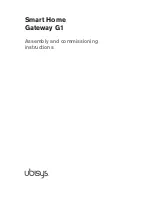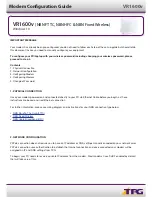
1
Overview
11
6. The
IP
rules
are
now
searched
for
a
rule
that
matches
the
packet.
The
following
parameters
are
part
of
the
matching
process:
•
Source
and
destination
interfaces
•
Source
and
destination
network
•
IP
protocol
(for
example
TCP,
UDP,
ICMP)
•
TCP/UDP
ports
•
ICMP
types
•
Point
in
time
in
reference
to
a
predefined
schedule
If
a
match
cannot
be
found,
the
packet
is
dropped.
If
a
rule
is
found
that
matches
the
new
flow,
the
Action
property
of
the
rule
is
used
to
decide
what
the
SEG
should
do
with
the
flow.
If
the
action
is
Drop,
the
packet
is
dropped
and
the
event
is
logged
according
to
the
log
settings
for
the
rule.
7. If
the
action
is
Allow,
the
packet
is
allowed
through
the
system.
A
corresponding
flow
will
be
noted
by
the
SEG
for
matching
subsequent
packets
belonging
to
the
same
flow.
The
allowed
traffic
is
also
bidirectional
so
that
the
same
IP
rule
also
permits
packets
to
return
from
the
destination
network.
Finally,
the
opening
of
the
new
flow
will
be
logged
according
to
the
log
settings
of
the
rule.
The
default
is
for
logging
to
be
enabled.
8. Eventually,
the
packet
will
be
forwarded
out
on
the
destination
interface
according
to
the
flow.
If
the
destination
interface
is
a
tunnel
interface,
additional
processing
such
as
encryption
or
encapsulation
might
occur.












































